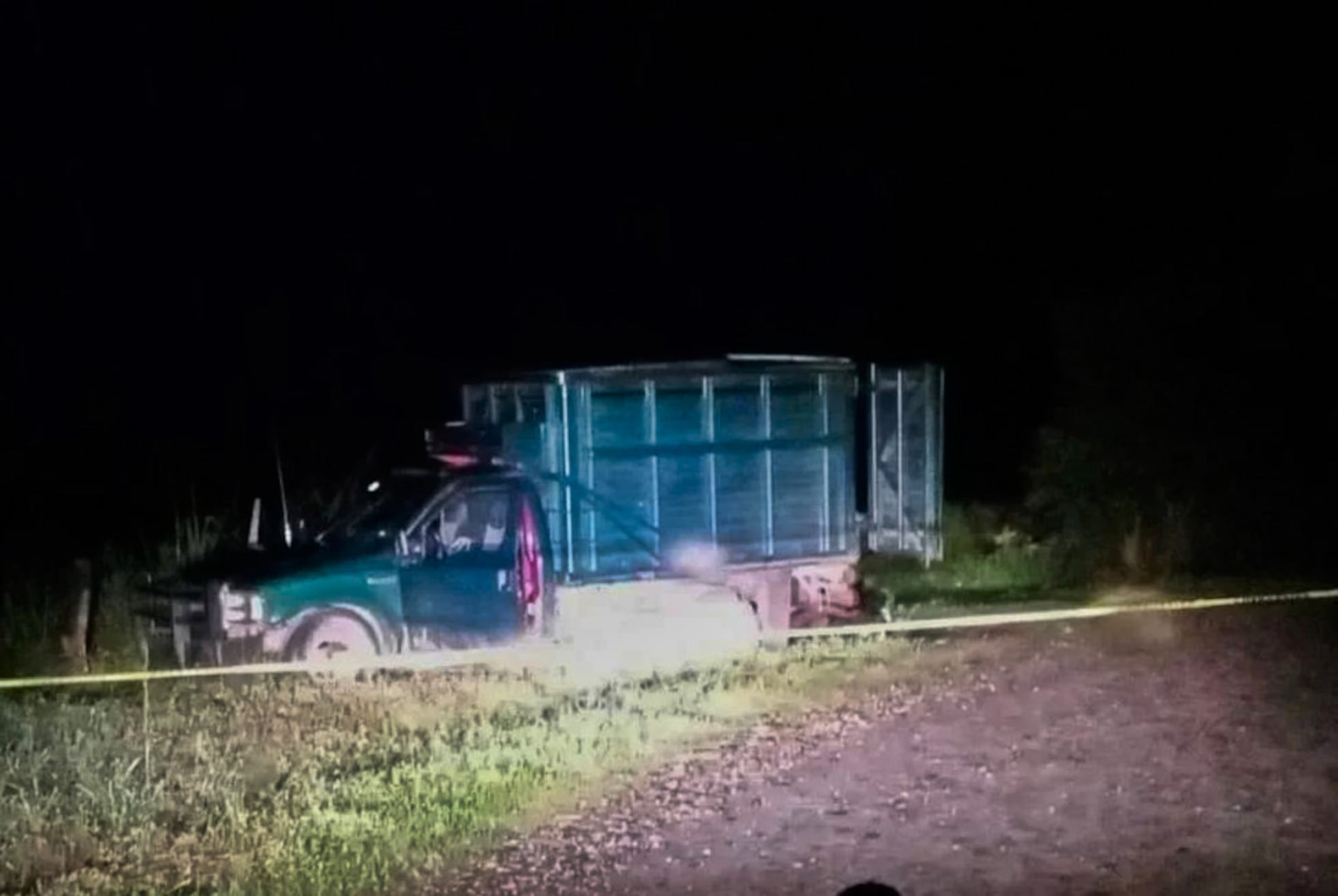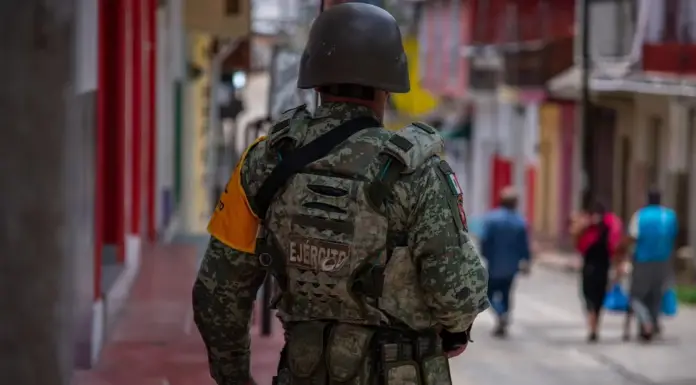
Blood stains the back of the cattle transport truck. The doors are open: inside, twisted human bodies are piled up between black garbage bags that were used as raincoats to protect themselves from the heavy rains that have hit Chiapas these days. There are two more corpses, fallen on the grass. They can be seen in the photographs taken with a cell phone of the crime scene. A group of 33 Asian, African and Latin American migrants were crossing the state crowded together on Tuesday night when they encountered an Army patrol. It is not clear what happened, but the result is: at least six people shot dead by the military and another 12 wounded. The latest migrant massacre on Mexican territory.
The Army has acknowledged the massacre in a statement from the National Defense Secretariat (Sedena). The two soldiers accused of shooting at the migrants have been “removed from their duties” and are now at the disposal of the Attorney General’s Office (FGR), which has not yet made a statement on the matter. Chiapas, a state taken over by the war between the Sinaloa Cartel and the Jalisco Nueva Generación Cartel, is the main entry point for migrants from Central and South America trying to reach the United States. This time, Latin Americans were in the minority. The cattle trucks were carrying people of “Egyptian, Nepalese, Cuban, Indian, Pakistani and Arab nationality.”
Questioned by EL PAÍS, a Sedena spokesperson indicated that “Arab nationality” (which is not a nationality, but a language) refers to citizens of Saudi Arabia, a country rich in oil and not accustomed to using Mexican migration routes. A day later, the President of the Republic, Claudia Sheinbaum, clarified that the victims come from Egypt, El Salvador and Peru: the last two, nationalities that did not appear in the original count by the military.
The incident, which the military did not make public until Wednesday afternoon, when the local press had already reported it, occurred during the night of Tuesday. The bodies were not recovered until 3:00 in the morning. According to the account released by the Army, a patrol was patrolling the rural road that links the municipalities of Villacomaltitlán and Huixtla in search of possible drug and human traffickers. The coyotes use this route, popularly known as Los Cocos, to avoid the usual immigration controls on the Pan-American Highway. At 8:50 p.m., the soldiers “detected a pick-up type vehicle that was going at high speed.” According to this version, the car tried to flee when it recognized the Sedena officers.
Behind the pickup truck, right next to each other, were two cattle trucks, “trucks with flatbeds like those used by criminal groups in that region.” The soldiers allegedly heard two “detonations.” Two of them opened fire and riddled them with bullets. The truck carrying the migrants went off the road and crashed into a tree. By the time the soldiers approached, the coyotes had fled. None have been arrested so far. The soldiers found dozens of people in shock who were crying and asking for help. The human traffickers had hidden them in the platform and floor of the truck, according to El Financiero.
Four of them died there. Another two died in the General Hospital of Huixtla, where they were transferred. There are another 12 injured and “17 unharmed,” according to the Sedena. Those who survived are under the control of the National Institute of Migration. “The two soldiers who fired the shots were removed from their duties and, as this was an incident in which civilians were affected, the Attorney General’s Office was informed so that it can carry out the corresponding legal proceedings and determine and determine the corresponding responsibilities; without prejudice to the Attorney General’s Office for Military Justice, carrying out investigations regarding military discipline,” the Army reported.
Neither the acting governor of Chiapas, Rutilio Escandón, nor his successor, Eduardo Ramírez, who will take office in December after being elected in the elections on June 2, have commented on the massacre. Not even the National Institute of Migration, an organization also harshly criticized for human rights violations, has done so. Ramírez has been traveling since Tuesday morning, as he announced on his social networks, when the information about the massacre had already been picked up by the local press. Escandón has visited a school during the day. The umpteenth migrant massacre in Mexico, this time at the hands of the Army, occurred on the same day that the country swore in a woman as president for the first time in its history, Claudia Sheinbaum, who also did not speak about the massacre until two days later, on Thursday, when she declared that it was a “regrettable event and it has to be investigated and sanctioned”: “A situation like this cannot be repeated. Measures are being taken.”
The relationship of the military with Morena, the party of Sheinbaum, Escandón and Ramírez, has been questioned in recent weeks. Sheinbaum’s predecessor, former President Andrés Manuel López Obrador, has granted increasing power to the Army during his six-year term in civil tasks, such as immigration control at borders and airports, in the face of repeated criticism from the opposition, academia and various civil society groups. On September 25, the Senate also approved that the National Guard, which was born as a civilian body, would be placed under the control of the Sedena, a controversial measure achieved in the last minute of the López Obrador government thanks to the majority obtained by Sheinbaum on June 2.
The modus operandi of the Army is usually opaque and in cases like this the information that is disseminated is minimal. The military spokesman consulted by EL PAÍS only added that the investigation “will be determined by the competent authorities” and that no soldier has been injured. While the massacre is being clarified, the photograph of the blood-stained trucks remains, an image that recalls other recent ones and puts back on the table the odyssey of migrants who cross Mexico, surrounded by the authorities and organized crime.
Source: elpais






